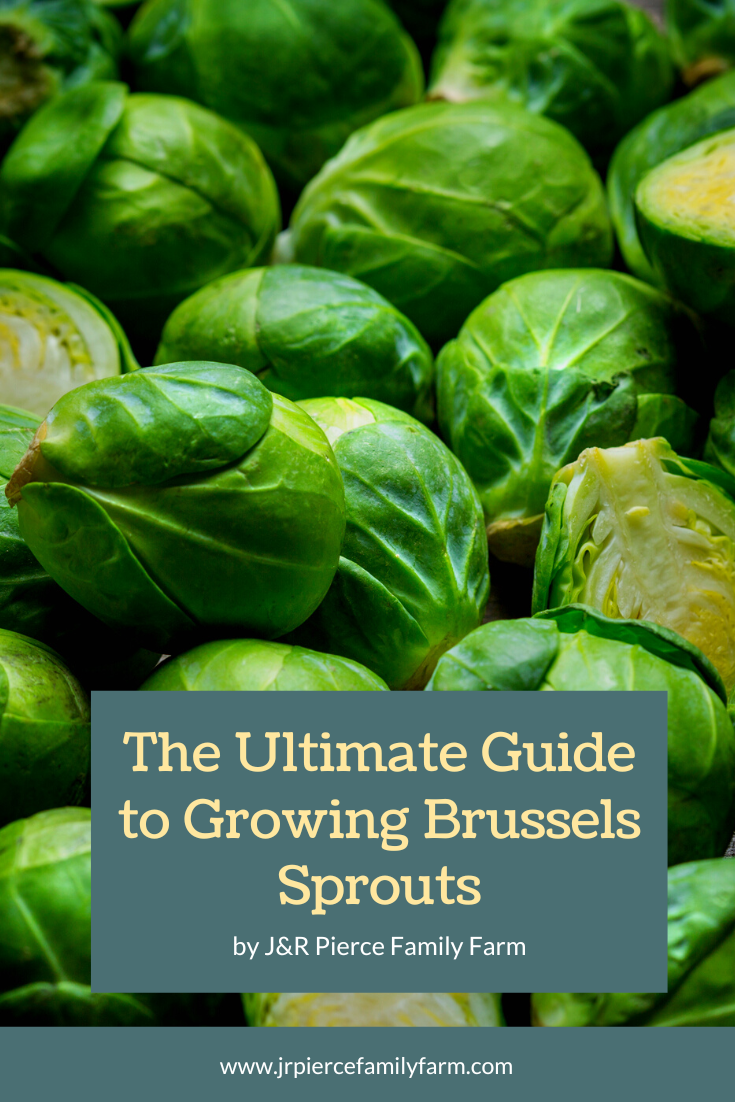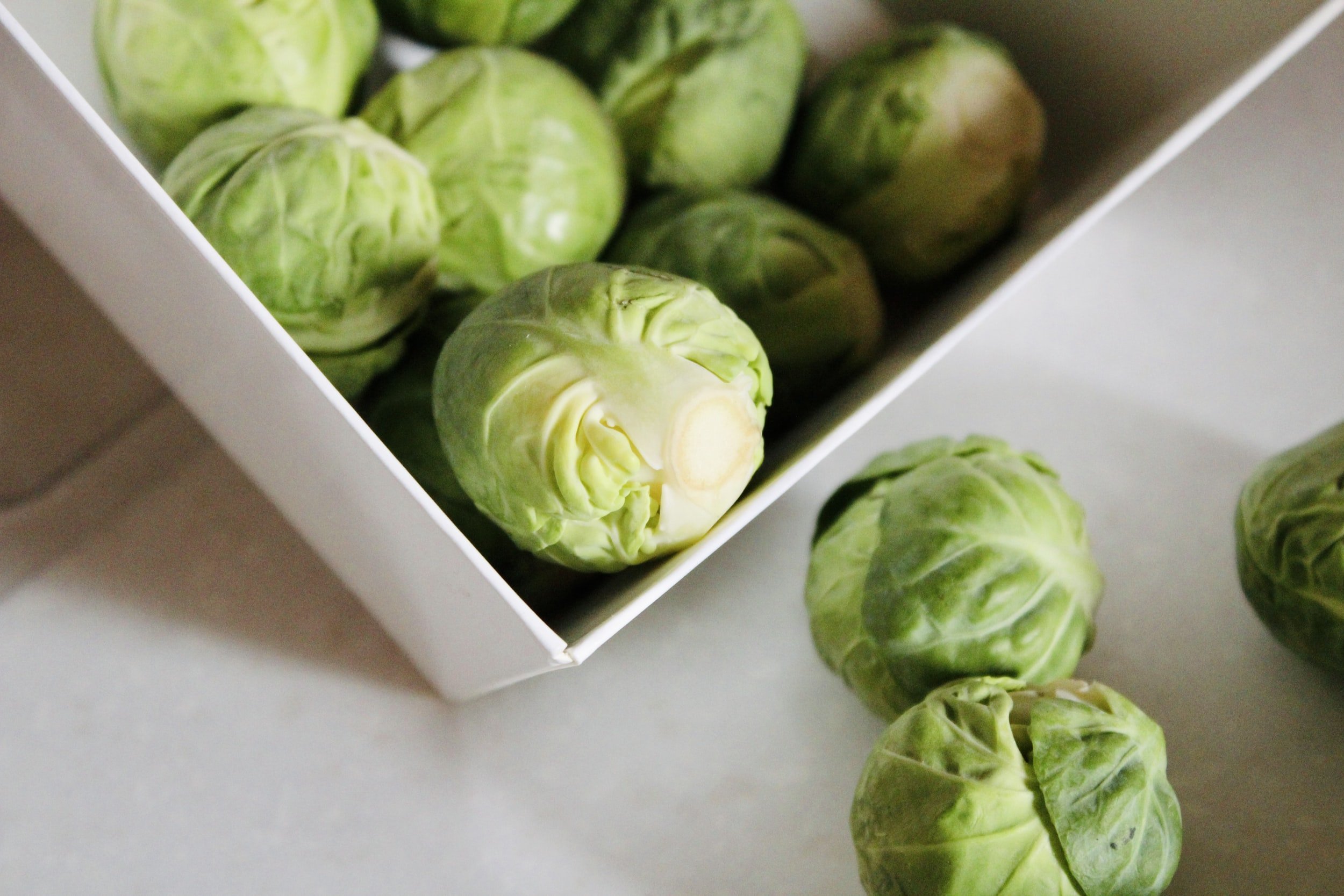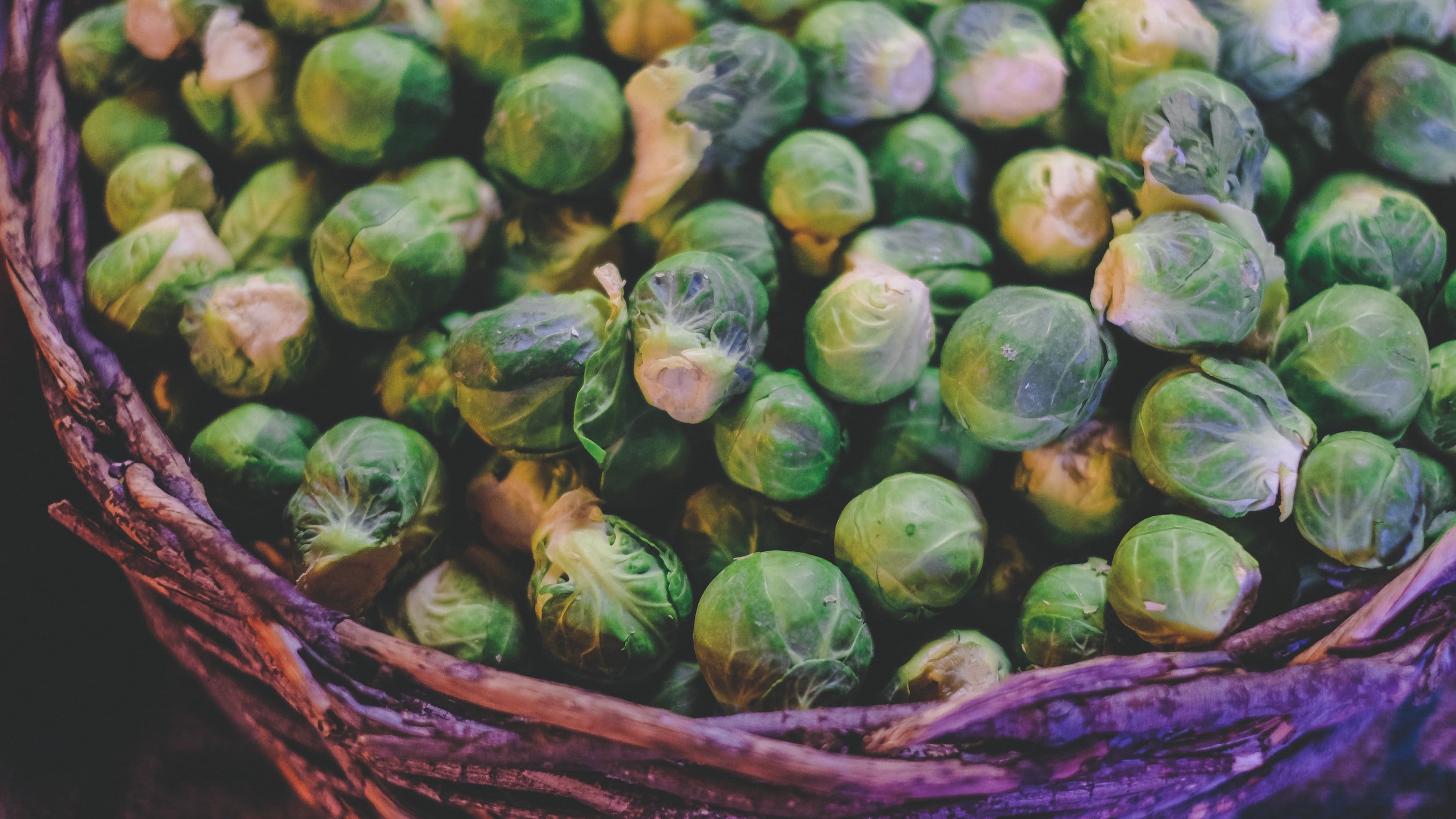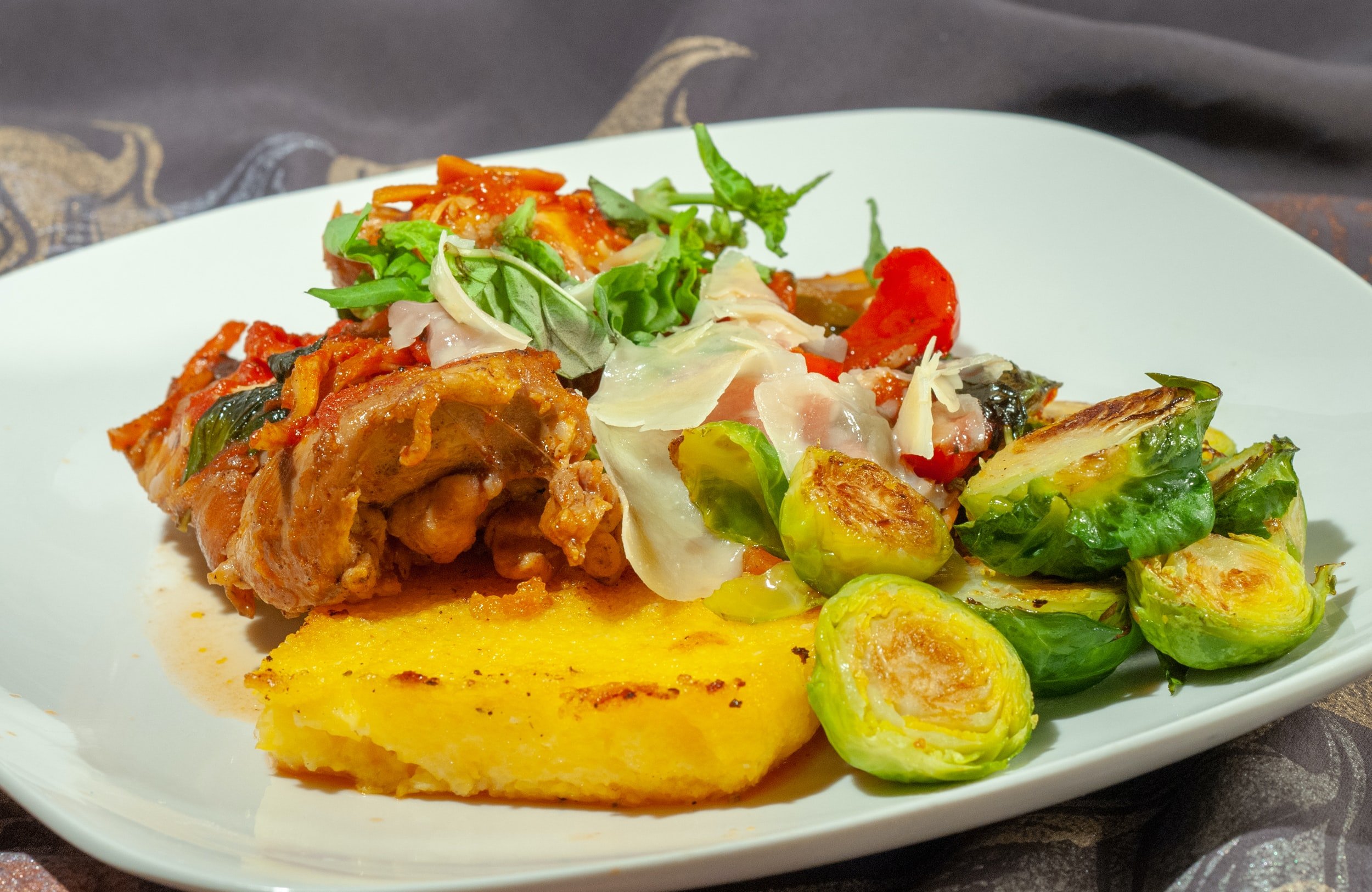How to Grow Brussels Sprouts
Here at J&R Pierce Family Farm, I think it's important to connect my readers with valuable insight from other master gardeners. Today's post is a guest post brought to you by John Thomas, a talented freelance writer.
If there is one thing my wife and children love, it is the crispy, nutty taste of Brussels sprouts fried up just right in some good olive oil and lightly seasoned with salt and pepper.
For my wife, it’s a great way to eat healthy. For the kids, there is no easier way to make sure they are getting the vegetables their growing bodies need.
Of course it is easy to go to the grocery store and buy Brussels sprouts. But just like the book is always better than the movie, home grown vegetables are always better than produce from the grocery store.
With that in mind here are some simple tips to keep in mind when growing Brussels sprouts.
**J&R Pierce Family Farm is a participant in the Amazon Services LLC Associates Program, an affiliate advertising program designed to allow sites to earn advertising fees by linking to products on Amazon. I often link to Amazon when recommending certain products, and if you choose to purchase, I may earn a small percentage of the sale. It costs you nothing extra, and all recommended products are ones that I personally vouch for. **
How Do You Grow Brussels Sprouts at Home?
Growing your own Brussels sprouts at home is a great way to enjoy this delicious vegetable year-round. Here are a few quick tips to get you started:
Start with healthy plants. Look for varieties that are resistant to pests and diseases.
Plant in well-drained soil in full sun. Amend the soil with compost or other organic matter to improve drainage and fertility.
Water regularly, especially during dry periods. Keep the soil moist but not soggy.
Harvest when the sprouts are firm and about 1 inch in diameter. Cut them from the stalk, being careful not to damage the plant.
With a little care, you can enjoy fresh Brussels sprouts straight from your own garden!
Here are a few tips for how to cook with Brussels sprouts once you’ve enjoyed your bountiful harvest:
Varieties of Brussels Sprouts: What’s In A Name?
But before we begin we need to pause for a moment and acknowledge a few important points about Brussels sprouts. First its’ “Brussels” sprouts not “Brussel” sprouts.
As you might have guessed, the name is, in fact, tied to the fact that Brussels sprouts originated in the city of their namesake in the 1600’s. For that reason the “B” in Brussels sprouts is always capitalized.
Also, there isn’t just one type of Brussels sprouts. There are many different varieties that will thrive and offer different flavors or advantages depending on your climate.
For example, a variety like Royal Marvel is more resistant to certain diseases. A Rubine Brussels sprouts plant might offers fewer sprouts but more flavor. Make sure you know which variety you are working with in order to ensure that particular variety can thrive in your climate. Be sure to research the varieties of Brussels sprouts before you add them to your garden planning chart.
Now to move on to more important matters.
To Plant or to Pot Brussels Sprouts
When it comes to growing Brussels sprouts, the first question you need to ask yourself is if you want to grow them in the ground or if you want to grow them in pots?
For those who lack a good garden space outside, Brussels sprouts are a great vegetable that can be grown in pots on balconies, porches, and decks. They can even be grown indoors.
One Brussels sprout plant can fit inside a 12-14 inch pot, though if you want to keep more than one plant in a pot, a deeper and wider “bucket” will be necessary.
However, because many of the same rules for successfully growing Brussels sprouts applies to pots and plants alike, let’s continue by assuming you want to grow your Brussels sprouts in your garden.
Worth a Row?
It might be a challenge to convince the die-hard carrot, cucumber, and kale lovers to devote precious space in their gardens to Brussels sprouts—often considered a B-squad vegetable.
But it’s important to remember that Brussels sprouts are a cool weather vegetable and just because you love the one doesn’t mean you can grow the other.
When to Plant
Because Brussels sprouts thrive in cool temperatures it is wise to plant them in very early spring. You can also plant in late summer or early fall if you are interested in harvesting them as a winter vegetable. And don’t worry about frost, as Brussels sprouts do well and even prefer a frosty day here and there.
Seeds, Soil and Sun
Plant your Brussels sprout seeds about one inch deep in soil that is well drained. It should also have an appropriate pH level (for Brussels sprouts that would be 6.8). Brussels sprouts are an introvert vegetable—they like their space—so make sure you plant rows with 18-24 inch spacing between them.
And like many vegetables, Brussels sprouts like the sun. Plant them in a place where they will get 6 hours of sun or more per day.
All the above applies to those who choose to skip the seeds and go straight to planting young Brussels sprouts plants. For those who go this route make sure to get the plants in the ground right away.
Finally, note that if you are planting young Brussels sprout plants they might do well with even more space. Consider giving each row 30 inches of room to give them the space they will need. This will also make it easier for you to walk around and examine the plants to ensure their health.
Water
Whether you plant seeds or saplings, be sure to water your Brussels sprout plants regularly. Make sure they get about an inch and a half of water each week. For better moisture retention, you can always spread a few inches of mulch on the soil surrounding your Brussels sprout rows. Obviously mulch will also help to keep weeds away and make your job much easier later on.
Things to Keep In Mind
After you have planted your Brussels sprout seeds or young plants in moist, well-lit soil, it is important to keep a look out for some common problems that can interrupt a perfectly good crop of sprouts.
First, it is helpful to be aware that Brussels sprouts are vulnerable to many of the same diseases and pests as broccoli and cabbage. If cabbageworm, maggots, or powdery mildew have infested or infected your Brussels sprouts, consult your local plant nursery or green thumb guru for ways to salvage your harvest.
Be Patient
Brussels sprouts can take a long time to mature. Depending on weather conditions, amount of daily sunlight, and quality of the soil, it could take three months before the sprouts are ready to harvest. What can make your waiting seem particularly painful is the fact that the sprouts themselves might not appear until the plant has reached full height.
But hang in there, your Brussels sprouts are growing.
Harvest
Now comes the fun part - the harvest. The sprouts themselves will begin to form at the bottom and work their way upwards. Wait to harvest until the sprouts are around 1-2 inches in diameter. At this point, the sprouts should also be firm and green.
To harvest twist the sprout off the plant. If leaves are yellow they can also be removed during harvest. It is possible that a second batch of sprouts will start to form after the first has been harvested. While this batch won’t be as firm as the first, they, too, can be enjoyed once ready.
Storage
Not that you’ll want to wait any longer to eat your Brussels sprouts, but they will taste best if eaten within the first day or two after being picked. In the meantime, you can store them in your refrigerator until the time is right to try out your latest Brussels sprout recipe.
Make Your Own Brussels Sprouts Recipe
Speaking of recipes, as I said before, my family enjoys the simple taste of Brussels sprouts fried in olive oil and seasoned with salt and pepper. But that is only the tip of the Brussels sprouts iceberg. You can experiment with Brussels sprouts in endless ways. Brussels sprouts can be great in salads, as a side dish, and there are even recipes for Brussels sprout tacos.
However you eat them, you will know you are eating a fresh, healthy food grown (patiently) in your own backyard or on your own balcony.
John Thomas is a freelance writer and hobby gardener. He writes regularly at Soli Deo Gloria.
Want to learn more about farming? Be sure to check out these featured articles!
Subscribe to our email newsletter for regular tips and tricks on homesteading – wherever you are. You can also follow us on Instagram (@jrpiercefamilyfarm) and Pinterest (J&R Pierce Family Farm) for frequent updates. Happy homesteading!













